
20. THE INSTRUMENT GALLERY
Illustrations of Telegraph Instruments and Equipment, taken from contemporary sources. Not to scale
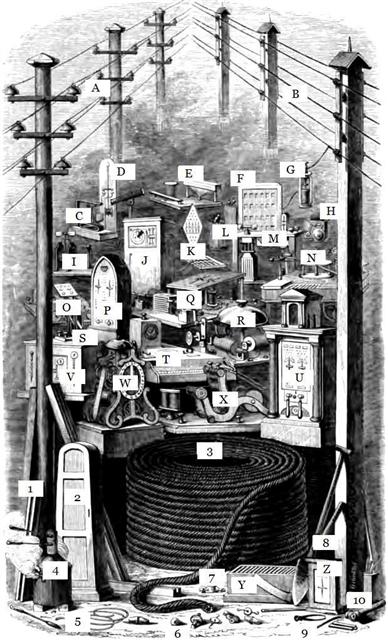
The Electric Telegraph, then and now, 1859
A. Bright's insulators, B. Cooke's insulators,
C. Schilling's telegraph, D. Bain's clock, E. Sömmering's telegraph,
F. Alexander's telegraph, G. Lightning Protector, H. Wheatstone's alarm,
I. Bain's chemical telegraph, J. Ronald's telegraph,K. Cooke & Wheatstone's
five-needle
telegraph,L. Leiden jars, M. Steinheil's telegraph,N. House's
telegraph, O. Bright's magneto telegraph,P. Highton's two-needle
telegraph,
Q. Henley's magneto telegraph,R. Bright's bell
telegraph,S. Cooke & Wheatstone's one-needle telegraph coil,T.
Froment's telegraph,
U. Cooke & Wheatstone's two-needle telegraph,V. Foy & Breguet's telegraph,
W. Brett's telegraph, X. An American recording telegraph,
Y. Cooke's Sand Battery, Z. Cooke's detector or galvanometer
1.
Troughs for underground cables, 2. Test box, 3. Submarine cable 4.
Soldering iron furnace, 5. Soldering iron and solder, 6. Cooke's
insulators and wire connectors, 7. Jointing shackle, 8. Shovel and
Pick, 9. Jointing tools,
10. Hammer
The Engravings
The poor quality of the images is due to the age and condition of the mid-nineteenth century sources. They have been scanned from the books listed in the Sources, from patent specifications, from magazine articles and from manufacturers' catalogues; all sources for engravings are over 140 years old.
Just Scroll down for many more pictures!
1
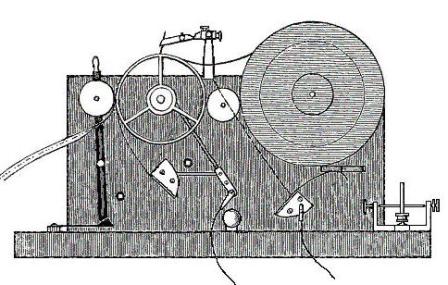
Bain Writer 1848
Used
by the Electric Telegraph Company between 1848 and 1860. It printed
the dots and dashes of Bain Code on a clockwork-driven roll of
chemically-sensitized paper. There is a finger-pedal or key on the
right of the base to send the message. It could also be used with a
separate rotary transmitter fed with punch tape: the tape was
prepared originally by Bain's crude single hole punch and then by
a three-lever punch devised by Latimer Clark.
2
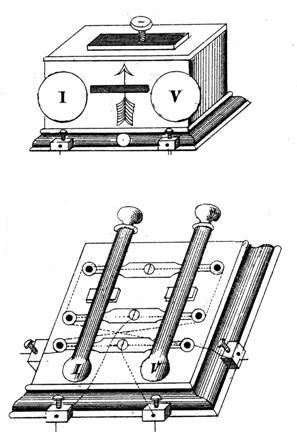
Bain's first I & V Telegraph of 1843
These simple instruments with double-keys and a single-needle indicator
were
used on state circuits and on the railways in the Austrian Empire
from 1843. A thoroughly effective device, it used a cypher based on
combinations of the numbers 1 and 5 (Roman I and V).
3
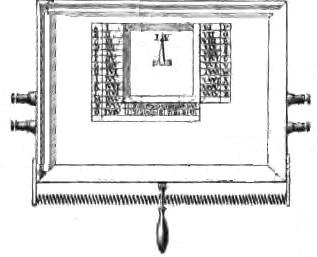
Bain's I & V Telegraph of 1845
This is the single needle and drop handle version mounted on
a wall bracket used between Edinburgh and Glasgow, as well as
on railways in Austria-Hungary.
It
has replaced the keys or pedals with a rotating commutator so that it
looked more like the needle telegraph common in Britain; the drop
handle was spring-loaded to return to the mid-point.
4
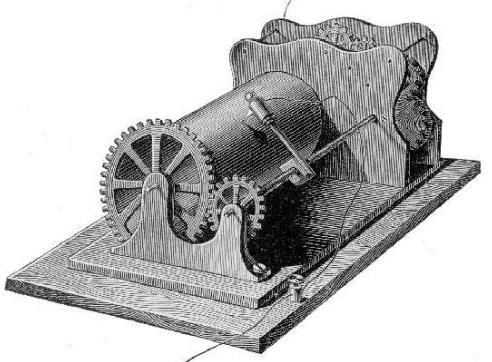
Bakewell's Copying Telegraph 1848
Used experimentally in 1854, it is the precursor of the
facsimile machine. The sender and the receiver were identical, with a
rotating drum worked by clockwork and a traversing
electric "feeler": using metallic foil round the
drum on which hand-writing or a drawing was made to send, and
with chemically-sensitized paper to receive.
5
Bonelli's Typo-Telegraph 1860
A small chemical writer that printed roman alphabet on its right
side, sending from
feelers scanning a line of metallic type set on the left side, as
it reciprocated. It required a five-wire circuit, one wire for
each feeler. The tape on the right under the feelers was about one inch
wide. This was used by Bonelli's Telegraph Company between Liverpool
and Manchester in 1863.
6
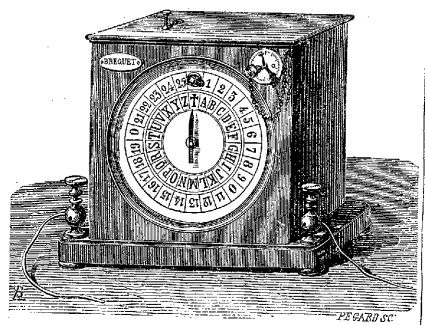
Breguet's Dial Telegraph
The Receiver
Used
widely in French government circuits until the American telegraph was
adopted in 1855 and on French railway circuits for much of the rest of
the century. There was a separate alarm bell to attract the
clerk's attention.
It was adopted by the Economic Telegraph Company in 1863.
7
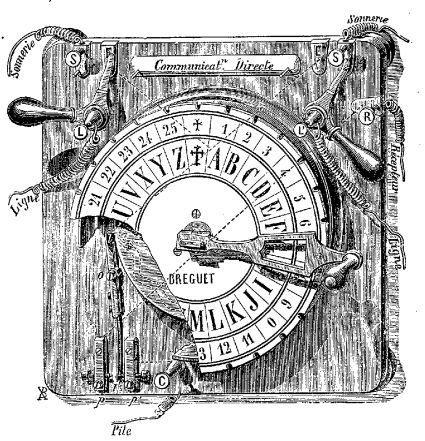
Breguet's Dial Telegraph
The Sender
Not
patented in this form in Britain, so was widely imitated and used on
internal circuits in factories and mines in the 1860s. It was a
galvanic telegraph, requiring a battery of cells and a single wire
circuit; movement of the handle rotated the needle of the
receiver.
8
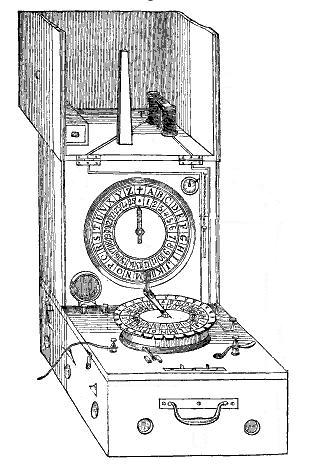
Breguet's Portable Telegraph 1854
Combining
in a single case the receiver, the sender, a small
galvanometer and a sand battery in the ventilated box base. This
was the only Breguet apparatus patented in Britain.
It was also
known as Breguet & Crossley's Telegraph, from its licensee in
Halifax.
9

Brett & Little's Electro-Telegraphic Converser 1847
The
first instrument devised by George Little, financed by Henry
and Alfred Brett, London brandy distillers. It was the earliest
challenge to the Cooke & Wheatstone telegraph with a two
needle indicator and a horizontal (left and right) handle to
communicate. The Electric Telegraph Company bought the patent in 1851
and suppressed its use.

Brett's Electric Type Printing Telegraph 1848
Used
by the European Telegraph Company in 1854. This was devised by Royal
Earl House in America during 1845 using a piano-like keyboard to
transmit the roman alphabet to print out on paper tape, it could also
be read from the clock-like dial in the centre; its
mechanical parts were operated by clockwork. Jacob Brett, brother of
the great cable entrepreneur John Watkins Brett, bought a license
from House.
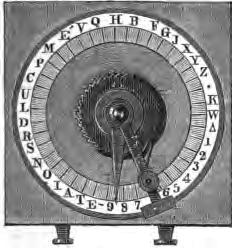
Jacob Brett's Rotary Telegraph Sender 1851
It used a rotary handle rather than the original keyboard to transmit the
roman
alphabet, the letters and numbers so arranged to speed-up transmission.
It was used by the Submarine Telegraph Company briefly in 1851.
A miniature or portable version was also made.
See also 31 below, for House's much improved version
11

Bright's Bell Telegraph 1855
Used
by the British & Irish Magnetic Telegraph Company between 1855 and
1868. Receiving acoustically, it was worked by a separate pair of
"tappers" or keys which are not shown; the device in the centre is a
relay.
It required a single wire circuit and worked the "European
Alphabet", a German adaptation of the American Code.
It was the "fastest" working of all simple electric telegraphs in Britain
12
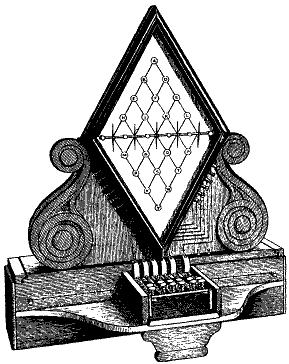
Cooke & Wheatstone's Five-Needle Telegraph 1849
Originally thought to be that used on the Great Western Railway in 1838,
this
is a miniature or demonstration version of the first
wall-mounted five-needle telegraph of 1837 that was made in 1849
for the Electric Telegraph Company as evidence in a patent law suit.
Only
one pair of these miniature instruments were made in 1849,
they were subsequently kept in the Company's boardroom along with
a sample
of the very first five-wire telegraph circuit of 1837 that was
recovered at Euston Square in 1863.
13
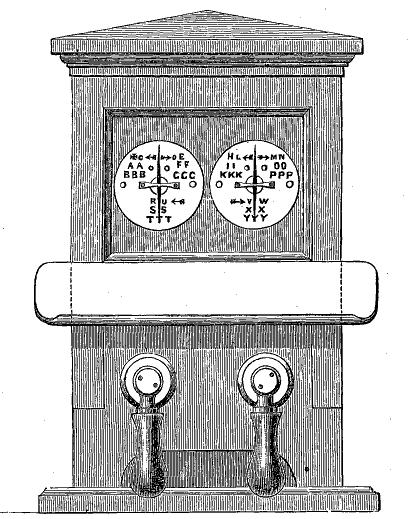
Cooke & Wheatstone's Two-Needle Telegraph 1842
Used
by the Electric Telegraph Company between 1842 and 1868. It comprised
two switches or commutators and two dials or galvanometers, and sent a
unique code that lasted until 1880. It needed two wires. Note later
drop handles.
The original version had a twenty character
code plus numbers, this version with "twin dials" had a twenty-five
character code but no numbers.
14
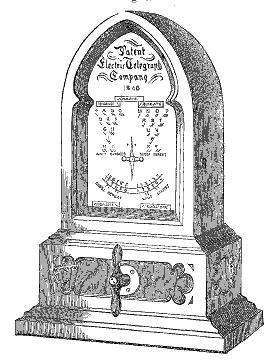
Cooke & Wheatstone's Single-Needle Telegraph 1846
This
is the earliest 'gothic' version with an S-handle; effectively just
half of the previous two-needle telegraph. It required just one line
wire, using its own special code until mid-1853 when the "European
Alphabet" was adopted.
Cooke & Wheatstone's Single-Needle Telegraph 1868
The final version with a drop handle and a shelf to hold the outgoing
message, used on local and divisional (or intermediate) lines of the
Electric Telegraph Company and by the railway companies for nearly a
century
15
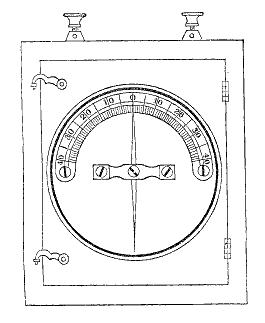
Cooke's Detector
The
first common electrical instrument from 1838; it was a portable
galvanometer measuring current in degrees of deflection.
16
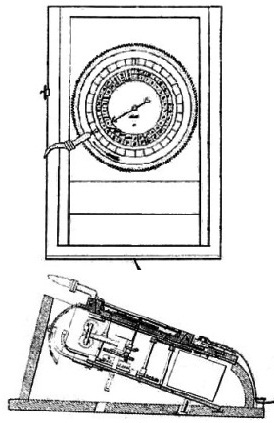
Cooke's Dial Telegraph 1840
A galvanic instrument in which moving the outer index to the dial
caused the inner hand at the distant station to follow its movement
Copied by Alexander Bain in 1863
17
Clark's Perforator 1850
Devised by Latimer Clark of the Electric Telegraph Company to perforate
tape for Bain's fast chemical telegraph replacing the original hammer-worked single punch, and used from 1850.
In
the engraving the two upper levers punched either a large
hole (dash) or a small hole (dot) in the tape, the lower
lever moved it on one space. The tape moved from right to
left beneath the levers.
A copy was attempted by Siemens & Halske but never used.
18
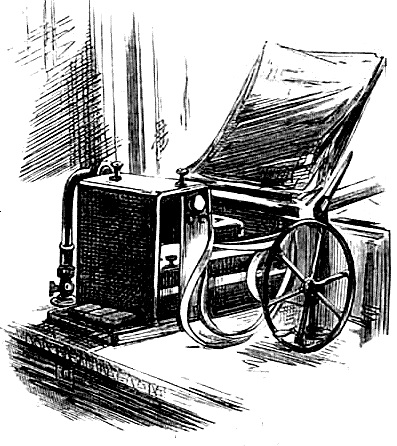
Culley's Pneumatic Perforator 1868
R
S Culley's improvement in Wheatstone's automatic telegraph, using
compressed air pistons to punch code into paper tape rather than
tiring and occasionally painful manual pressure.
It enabled women operators to punch tape for the first time.
19
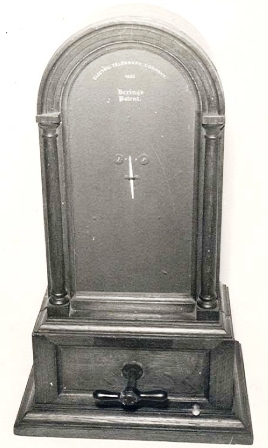
Dering's Telegraph 1852
George
Edward Dering's galvanic needle instrument worked by two small
electro-magnetic coils with an alarm bell in the arch. It was used on
the two long lines of the Electric Telegraph Company of Ireland,
between Dublin, Belfast and Newtownards, and from Port O'Spital near
Port Patrick to Dumfries in Scotland.
Probably made by William Reid in London, a shareholder in the company.
A Science Museum photograph
20

Digney's "American" Telegraph
The
French version of the inking receiver, used by the Submarine Telegraph
Company. The tape reel above the clockwork mechanism for moving
the tape,
with the electro-magnetic element to the right.
21
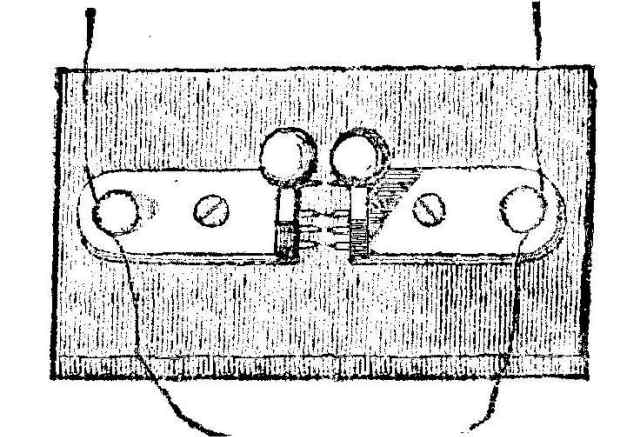
Electric Telegraph Company's paratonnerre 1848
Lightning
striking the line wires is short-circuited to earth across the
brass spheres and close points before it can damage the
instruments or their clerks.
There were a great many alternative arrangements for lightning protection.
22
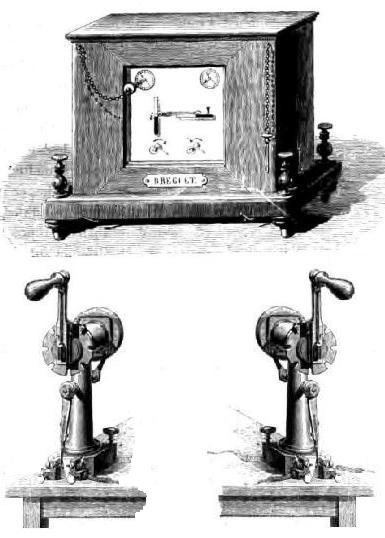
Foy & Breguet's Telegraph
Used
by the Submarine Telegraph Company briefly in 1852, and by the state
system in France until replaced by the Breguet dial telegraph.
It has
two rotating arms with two crank handles; the arms imitated the action
of the Chappe optical telegraph of the Bonaparte era.
23
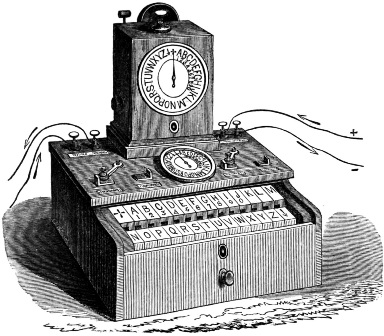
The ultimate improvement of Wheatstone's galvanic dial instrument.
A clockwork-powered receiving dial, a clockwork-powered transmitting keyboard with a verifying dial and a separate alarm bell, all three with
separate electro-magnetic escapements or actions.
Widely publicised in Britain around 1855 but not adopted
24
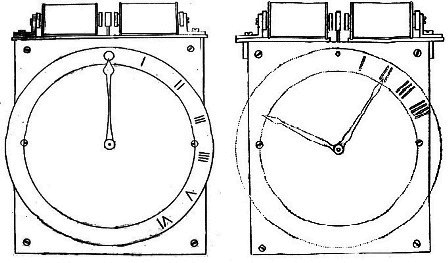
Used by the Electric Telegraph Company alongside of Cooke & Wheatstone's two-needle instruments for a short period.
The single index version worked in two directions, the double index worked two needles moving in opposite directions. The latter instrument controlled trains
on the South Devon Railway and was displayed at the Great Exhibition of 1851
For working both the single and double index telegraphs in connection
with a small galvanic battery
There was also a double magneto that did not need cells, this was in effect
a pair of Wheatstone magneto devices (see below, 79)
W H Hatcher was Secretary and Engineer to the Electric Telegraph Company
from 1846 to 1851
25
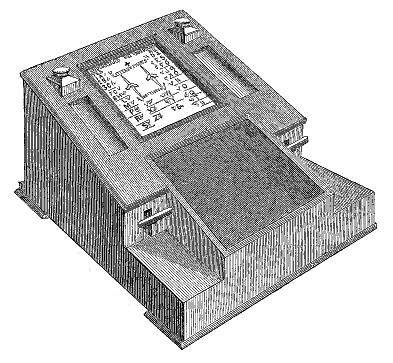
W T Henley's Magneto-Electric Telegraph 1852
Used
by the Magnetic Telegraph Company and its successors between 1851
and 1868 for domestic circuits; phased out in England after 1855,
it remained common in Ireland for many years. Each lever worked a
needle in one direction only, but without batteries. It required a
two-wire circuit.
26
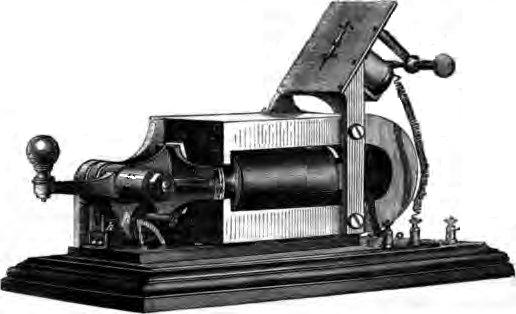
W T Henley's Single Needle Magneto-Electric Telegraph
Without needing batteries it was used for signalling on the early Mediterranean
underwater cables and, experimentally, on the Magnetic Telegraph Company's
domestic
long lines in the mid-1850s, with a special dot-dot code and a
single wire line. It was much slower in action than the
galvanic needle telegraphs. Its powerful current pulse was
also used for igniting explosive charges.
27
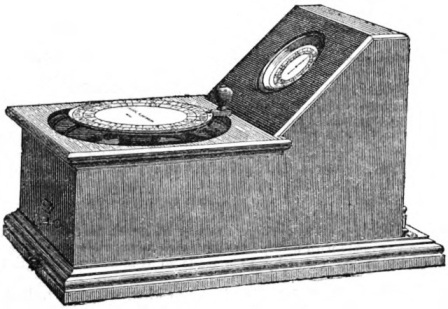
W T Henley's Magneto-Electric Dial Telegraph 1861
Rotating the horizontal handle generated a series of electrical pulses
that caused the index in the upper dial to move in sympathy.
The mechanism was not as precise as Wheatstone's or Siemens and
easily lost its synchronicity in unskilled hands
The British & Irish Magnetic Telegraph Company and the London
District Telegraph Company tried to market it, as well as Henley
28

W T Henley's Military Telegraph
Originating
from the Crimean War 1854-6, a portable galvanic single-needle
instrument with button keys, it also served as a galvanometer for
measuring current. Unlike his magneto-electric machines it was based on
Henley's galvanometers and so needed galvanic cells. It was
used by the Royal Engineers of the British Army in the 1860s and
1870s. As with other single-needle instruments it transmitted the
"European Alphabet".
29
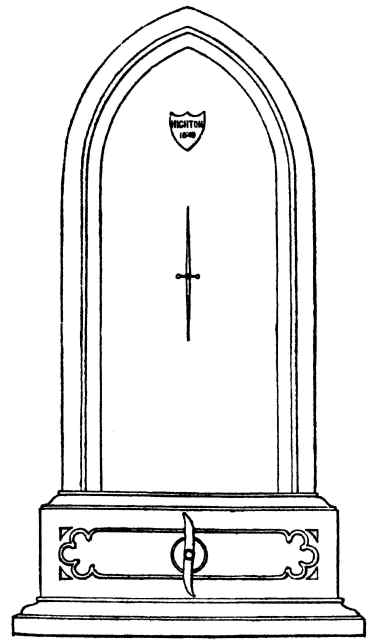
Highton's First Single-Needle Telegraph 1850
This is the earliest version with an S-handle for sending, dating from 1850.
It
had Highton's patent coils to work the long needle. The S-handle
commutator was replaced by Highton's patent
"tappers" shortly after. They all had a German-silver shield at
the head engraved with either Highton's name or that of the British
Telegraph Company. It used the unique Highton Code and a single wire
circuit.
30
Highton's Single-Needle Telegraph 1852
This improved version of Edward Highton's instrument had his mock
"suspended" diamond needle for receiving and Highton's patent
wooden "tappers" or keys for sending at the base with a single wire
circuit. Both the fat needle and the tappers are marked L and R for
Left and Right!
The two German-silver finger pointers were also on the operational version.
This was the version actually used by the British Telegraph Company.
31
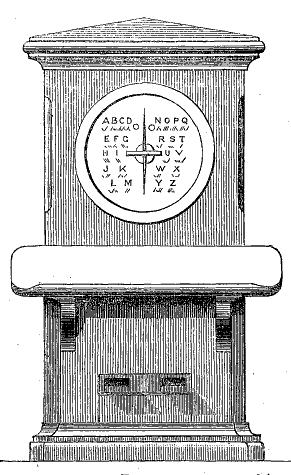
Highton's Single-Needle Telegraph
Used by the British & Irish Magnetic Telegraph Company and
the
London District Telegraph Company. After those of Cooke &
Wheatstone this was the commonest telegraph instrument in Britain.
(Note the "tappers")
32


Highton's Tappers 1852
Invented
in 1852, a pair of double current-reversing keys; installed in the base
of Highton's needle telegraph and used separately to work Bright's
Bells. A side view and plan view, the tappers and base are
wooden with a narrow brass bridge towards the front. The tappers
work on thin springs.
33
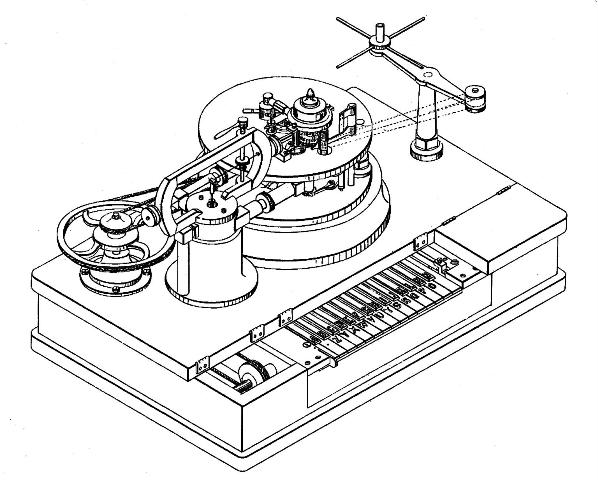
House's Type Printing Telegraph 1849
Royal Earl House's second
and much improved type-printing instrument. It printed messages in
roman capital letters onto a paper tape, it could also be read
letter-by-letter by means of a dial in the small turret on the top if
the paper ran out. The roll of paper tape was on the cross at top
right on the pedestal with an ink band (dotted). It had
a pneumatic regulator and needed a treadle air pump under the
table-top to turn its various mechanisms. It was widely used on
lines on America's east coast from 1850.
Unfortunately Jacob Brett, R E House's licensee in Europe, who patented it in England in May 1853, chose not to promote this advanced and effective type-printer
34
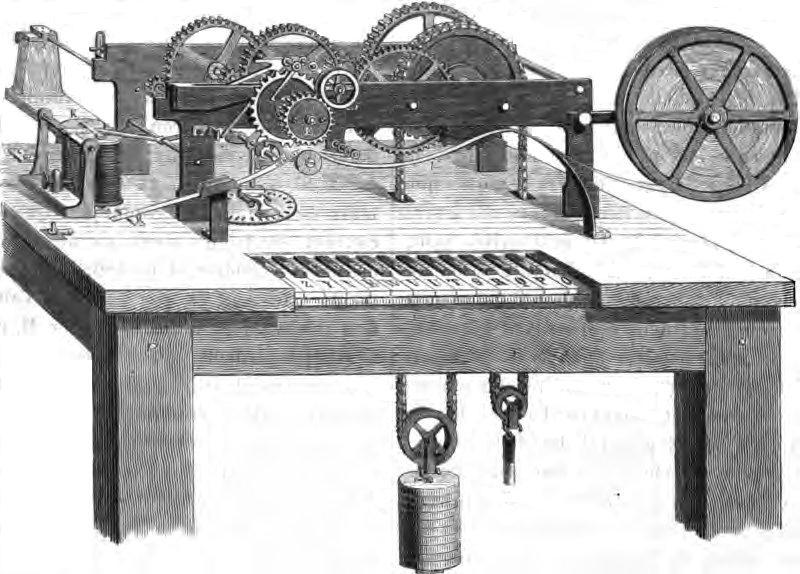
Hughes' Type Printing Telegraph 1858
Used
by the United Kingdom Electric Telegraph Company from 1862 until 1868.
It had a clockwork mechanism to print the roman alphabet on a paper
tape until the 1880s when Siemens & Halske introduced an electric
motor. It was to be adopted by the Submarine Telegraph
Company in 1872 for its circuits to Paris, Brussels, Cologne, Berlin
and Antwerp.
35 to 48
Insulators
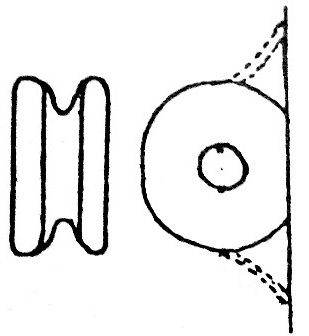
W F Cooke's Original Insulator
Introduced in 1842, a 2 inch diameter brown earthenware disc, the circuit
wire threaded through the hole,
stapled directly to the side of the telegraph pole.
Used on the Great Western Railway between Paddington and Slough

W F Cooke's Barrel Insulator
Electric Telegraph Company 1845 - 1850
A 3 inch long hollow earthenware cylinder retained by an iron staple to the pole, this was Cooke's second pottery insulator.
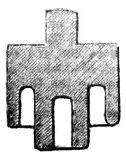
Alexander Bain's Insulator
Used between Edinburgh and Glasgow 1845
The first "bell" or "shed", a ceramic cylinder, the circuit wire tied
to the top pin, inserted onto a wooden or iron peg
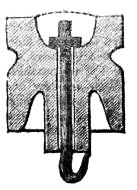
J L Ricardo's Insulator
Used experimentally by the Electric Telegraph Company 1848
Patented
by Lewis Ricardo, the Company's chairman, it was devised by Henry
Physick. A ceramic cylinder with an iron hook for the wire, secured to
the pole by a staple, the top recess filled with mastic
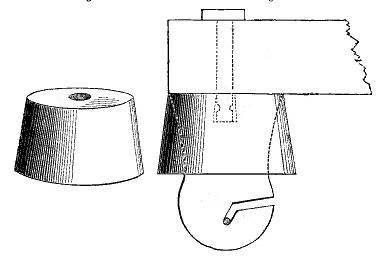
Edwin Clark's Insulator
Electric Telegraph Company 1850 - 1855
The "shed" protecting the inner stoneware insulator is a separate element stamped out of zinc
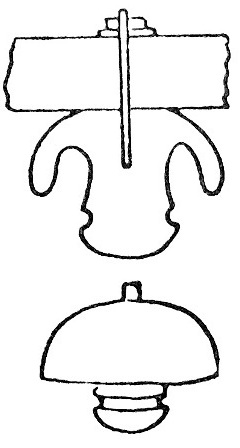
Edwin Clark' s Ceramic Insulator
The whole body is now made from glazed stoneware, improving its
insulative properties considerably
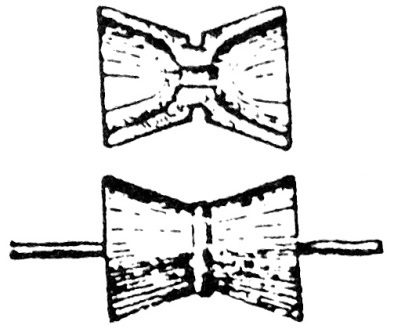
C V Walker's Porcelain Insulator
Inspired by Cooke's barrel of 1843, but made of porcelain in France in 1850,
used only on the circuits of the South Eastern Railway
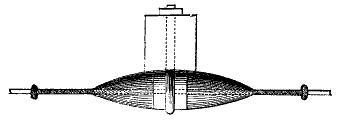
Edward Highton's Gutta-Percha Insulator
British Electric Telegraph Company 1851-52
A silk ribbon surrounded by hot gutta-percha and varnished with shellac and used on lines in Lancashire and Yorkshire.
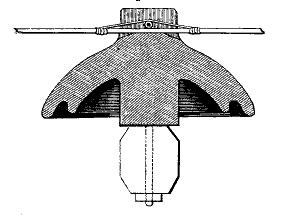
C T Bright's Insulator
Widely used
by the English & Irish Magnetic Telegraph Company,
British &
Irish Magnetic Telegraph Company and
the London District Telegraph
Company 1852 - 1868.
A metal pin and light wire held the wire in place
at the head
of the ceramic dome.
Latimer Clark's Insulator
Used by the Electric Telegraph Company from 1856 in relatively
small numbers. With a double shed or invert cast into the body.
The iron pin or bolt retained by mastic
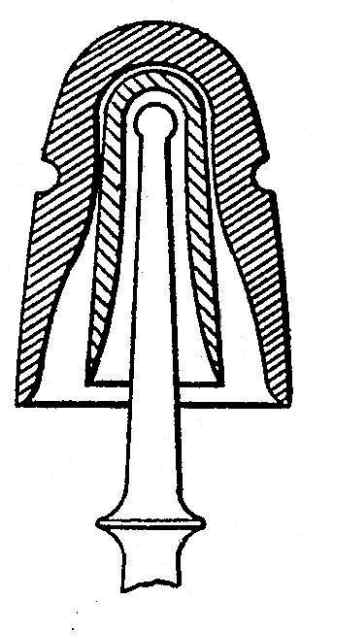
C F Varley's Insulator
Used by the Electric & International Telegraph Company, 1859 - 68
A ceramic "double shed" on an iron bolt, glued together with mastic, its use continued into the 20th Century.
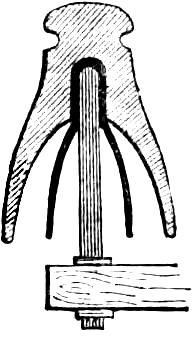
W Andrews' Insulator
Patented in 1861 and used extensively on the circuits of
the United Kingdom Electric Telegraph Company.
It comprises an iron bolt with an ebonite cup within a ceramic bell.
In 1860 Andrews had patented a complex cylindrical ebonite insulator,
with three resin elements, mastic adhesive and an iron hook,
that was embedded in the cross-bar
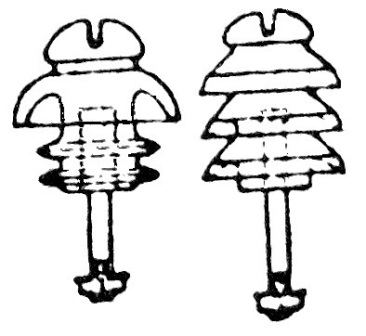
W T Henley's Insulators
Patented in 1861, showing the complexity of designs for the rain
and moisture deflecting "sheds"
Used only in test circuits in Britain and in Henley's contracts overseas
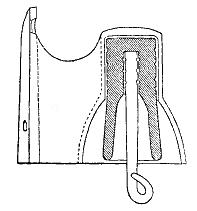
Siemens "Ironclad" Insulator
Used
by the Indo-European Telegraph Company from 1868 and also widely
used on government lines over rough terrain in Prussia
and Russia. An iron shell with a ceramic inner and an iron hook for the
wire all glued together.
49
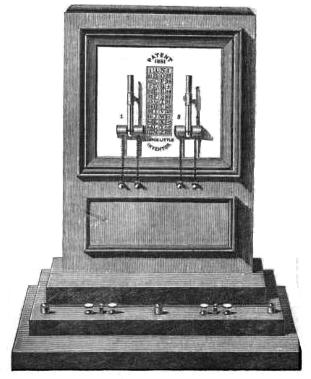
Little's Telegraph 1849
George
Little's second effort at a telegraph. The indicator uses two glass
vials each containing a metal filament in oil which moves either
left or right using the current reversing buttons on the base. There
was also a miniature or pocket-sized version. It was used only
experimentally.
50
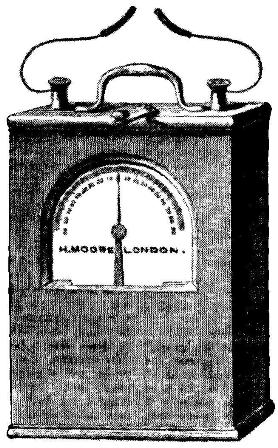
Moore's Galvanometer 1857
A
very simple and sensitive device used to receive messages on the first
Atlantic cable of 1857 and by the British Horological Institute in 1859
to receive the time-signal from the Greenwich Observatory.
51
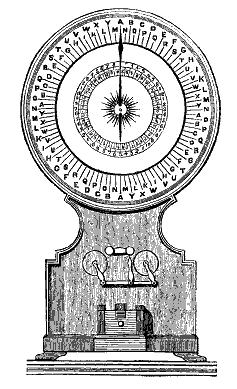
Nott & Gamble's Telegraph 1846
Used experimentally in 1846 and acquired by the Electric Telegraph Company.
There are two keys in the box at the base to work the index hand of the dial;
the
swing arm below the dial is the switch between the telegraph and the
alarm bell. It was used on the Great Western Railway's Box
Tunnel from 1848.
52
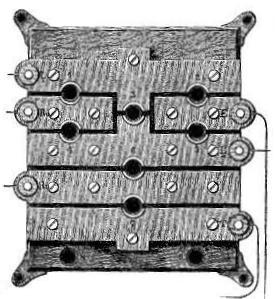

F W Nottebohm's Umschalter
The
first switch-board, used by the Royal Prussian Telegraph and
by the
Electric Telegraph Company.
An insulated metallic peg connected the
circuits at the holes in the metal strips.
53
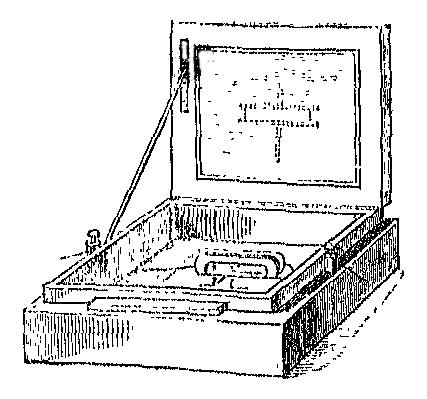
O'Shaughnessy's Indian "Telegraph" or Receiver 1851
Made
in India, a simple coil and a single one-inch long needle, with a
mirror in the lid. It worked a unique code for the East India Company.
54

O'Shaughnessy's Indian "Reverser" or Transmitter 1851
Turning the handle in the left reversed the current by dipping contacts in mercury. Used by the East India Company.
55 to 57
Pipes
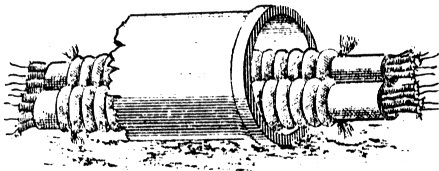
Electric Telegraph Company Pipe 1848
3 inch diameter solid cast-iron with socket ends,
Laid from the Strand to Nine Elms in London,
the first underground cable

William Reid's Pipe 1852
2 inch diameter, solid cast-iron with screw-ends,
used by the European Telegraph Company on its inner London circuits.
Wooden troughs were used for the trunk line to Dover
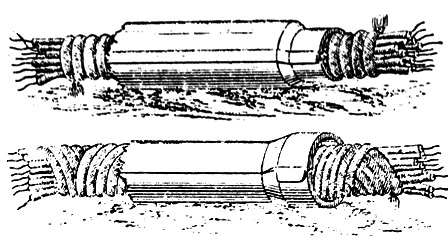
W T Henley's Patent Split Pipes 1853
2 inch diameter, two part cast-iron with socket ends,
used by the English & Irish Magnetic Telegraph Company and
the United Kingdom Electric Telegraph Company
58
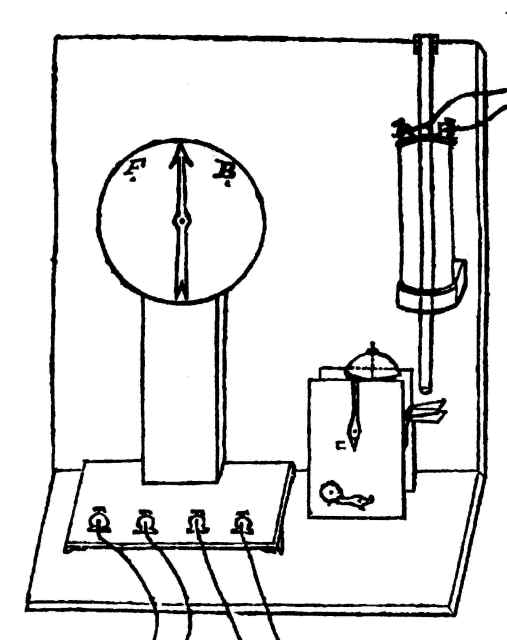
Rutter's Patent Electric-Indicator 1847
An
alarm for protection from fire, trespass and robbery. The alarm
apparatus with a galvanometer on the left, signalling F for Fire and B
for Burglar, with the small alarm bell to the left triggered by the
electromagnet above. It was worked by the electric thermometers and
mercury switches below, and later by automatic switches.
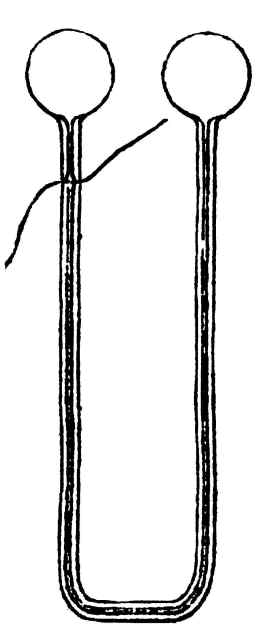
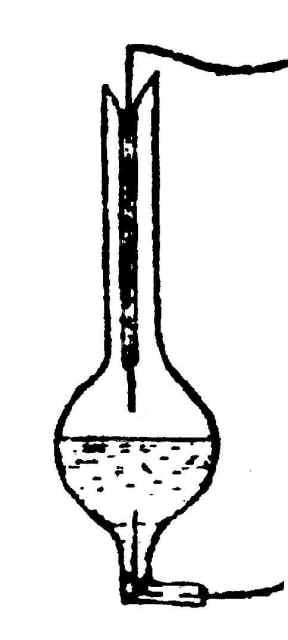
Rutter's Electric Indicator 1847
used an Electric Thermometer (left)
and a Mercury Switch (right)
The heat of
fire caused the mercury in the differential thermometer to rise to the
platinum points to create a circuit in one direction; a
burglar opening or closing a door or window tripped over the
mercury-filled bulb to create a circuit in the opposite direction.
59
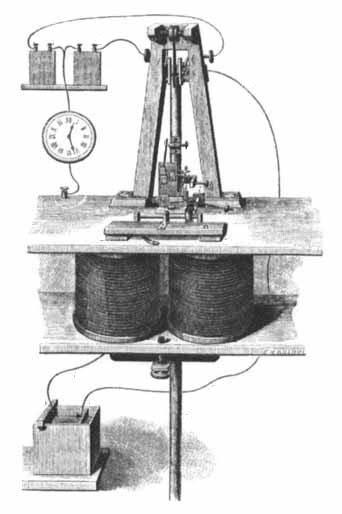
Shepherd's Electric Clock or Time Transmitter 1851
Used
to precisely transmit time in one-hundreth of seconds from Greenwich
Observatory to slave clocks at London Bridge railway terminus
and at the central stations of the telegraph companies in London.
60
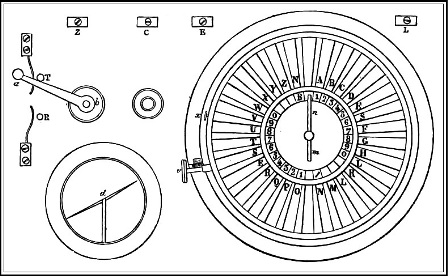
Siemens & Halske's Galvanic Dial Telegraph 1847
The
first Siemens telegraph, patented in Prussia in 1847. In one wooden
case there was a galvanometer on the lower left, a switch above,
the twelve inch diameter telegraph with dial and petal keys on the
right, and an internal alarm
Connectors along the top: Z - zinc, C - copper, E - earth, L - line.
Switch at left: T - telegraph, R - rest (alarm).
There
is a push-pull on-off control next to the switch. The
index or needle rotated continuously until stopped by pressure on a key.
61
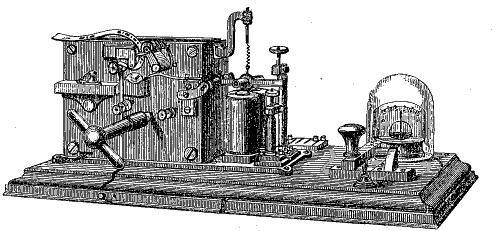
Siemens & Halske's "American" Telegraph
A key-and-inker used in Britain mainly for submarine telegraphy to Europe
before
1868, on the long domestic circuits of the Electric Telegraph Company
and of the United Kingdom Electric Telegraph Company. The receiving
clockwork-driven inker is to the left, the paper roll is in the base
drawer, the sending key and a galvanometer under a glass dome are on
the right.
62
Siemens & Halske's Magneto Dial Telegraph 1859
Used by the London District Telegraph Company in its
private circuits from 1860. It indicated the roman alphabet on
its dial by turning the handle. There is an exposed bell alarm on
the top with a switch between bell and telegraph.
Like the Universal Telegraph it used no galvanic cells.
63

Siemens & Halske's Rotary Sender 1869
This was a magneto-telegraph that transmitted code from a punched tape
without
the use of batteries, to one of Wheatstone's automatic receivers. It
was first used by the Indo-European Telegraph Company on its
circuit between London and Teheran using Varley's automatic relays.
64
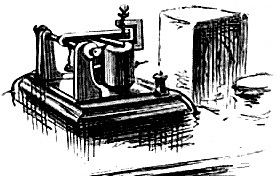
Siemens & Halske's "Sounder" or Acoustic Telegraph 1868
Introduced as an experiment to improve receiving rates by
the Electric Telegraph Company on its local circuits in
response to the success of Bright's Bell acoustic telegraph
It was not generally adopted by the Company
65

Statham's Fuze c.1850
A copper
wire covered with sulphuretted gutta percha insulation allowed sulphide
of copper to form on the interior of the resin. If the copper wire is
cut the current passes through the sulphide which ignites. Used with
galvanic batteries or single cells and induction coils to detonate
gunpowder and gun cotton for many years in demolition works.
66

Theiler's Direct Printing Telegraph 1857
Introduced the "disc inker" in place of the needle embosser on the American telegraphs used by the Electric Telegraph Company.
The electro-magnets, working the arm to the right, are not shown.
Now sensitive enough not to require a local relay
67
Thomson's Mirror Galvanometer 1857
An
oil lamp behind the graduated screen focussed a point of light on a
mirror and a magnet suspended on a filament in the coil of the
highly-sensitive galvanometer on the left. A current-reversing key
caused the mirror and magnet to turn and a reflected spot of light
indicated the message by swinging either left or right on the graduated
screen. Successfully used for receiving messages on the Atlantic
cables of 1858 and 1866.
68 to 73
Troughs
The sleeper or trough for carrying wires was not an original invention,
the patents noted applied to the insulation or to material used
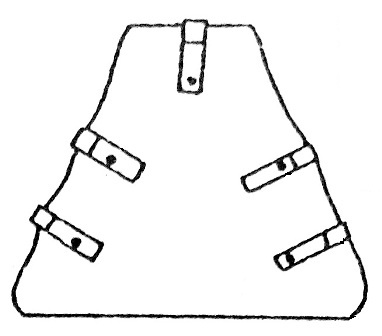
Cooke's Batten 1837
Not exactly a trough, but narrow lengths of wood with deep grooves
containing india-rubber insulated wires stopped with wood fillets,
2 inches high by 3 inches broad
Used between Euston Square and Camden Town on
the London & Birmingham Railway during 1837
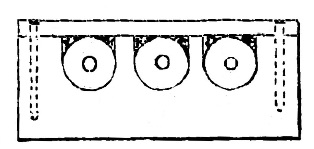
Reid's Original Sleeper or Trough 1847
Patented in 1847, the bare copper wires are laid between short,
cylindrical earthenware or gutta-percha carriers or supports within the
grooves of the sleeper, which are then filled with marine glue or other
resin, with resin washers where the sleepers meet to keep out
moisture.
This odd mode of insulation was reinvented by Henry Wilde in 1863.
Reid's Improved Sleeper or Trough 1847
Also patented in 1847, this had lead-sheathed, india-rubber and cotton
insulated
wires in a wooden sleeper or trough,covered with an iron "shield" or
lid. William Reid and T W B Brett also patented metallic troughs
in 1852, but there is no evidence that they were ever used
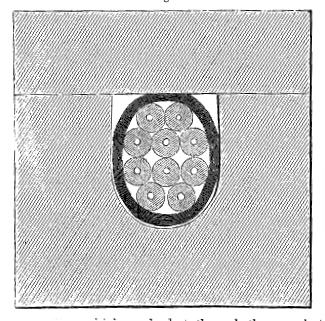
W T Henley's Original Troughs 1851
Protecting
underground gutta-percha telegraph cables bound together in heavy
webbing in wooden sleepers with wooden lids. Used by the English &
Irish Magnetic Telegraph Company between 1851 and 1852.
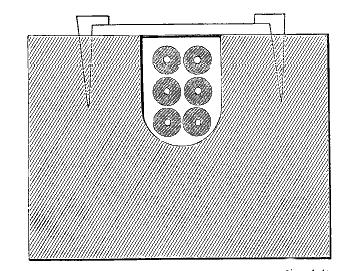
W T Henley's Improved Troughs 1851
Protecting
underground gutta-percha telegraph cables in rot-proofed wooden
sleepers with a zinc or iron lid. These were used by the English &
Irish Magnetic Telegraph Company and the British & Irish Magnetic
Telegraph Company between 1851 and 1868.
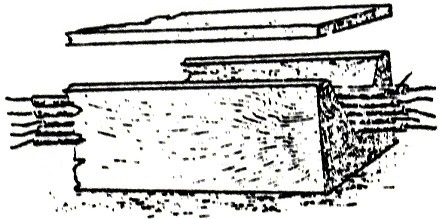
Electric Telegraph Company's Wooden Troughs 1854
Used on its short-lived "express" wires between London and Birmingham
in 1854 along the London & North-Western Railway
Of
note is the V form and loose deposition of the gutta-percha
insulated cables featured in William Reid's and T W B Brett's
1852 patent
74

Varley's Submarine Key 1854
The
first double current-reversing key, introduced on the International
Telegraph Company's underwater circuit from Lowestoft in
England to Scheveningen in Holland. Latterly it was used on the
Electric Telegraph Company's very long domestic lines with Siemens
American inkers or receivers.
It had five electrical connections,
to the relay, to the inker, to the line, to the line battery (and
inker), to the local battery (and relay).
75
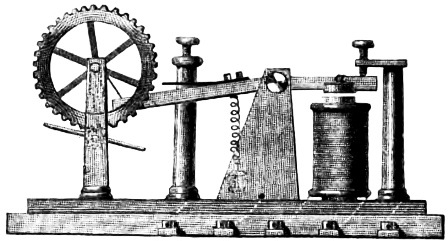
Varley's Relay 1854
This advanced double current-reversal relay or repeater automatically
amplified
the line current. It was used in tandem with Varley's Key
on the longest telegraph lines, from London to
Amsterdam, then to Liverpool, Edinburgh and to Dublin. It, too,
had five electrical connections along its base
Varley's relay was
adapted by 1860 to convert English double current-reversal
circuits to European (and American) single current working.
It
enabled direct land circuits, without manual retransmission, from
London to Constantinople in 1862, and even to Omsk in Siberia by
1864.
76
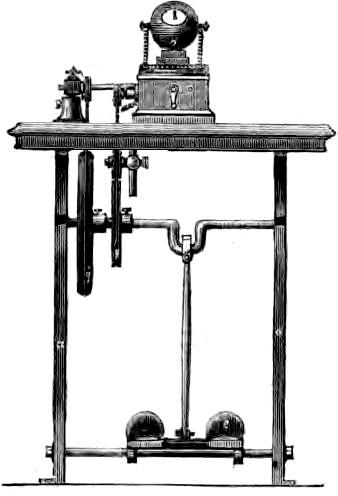
Wilde's Globe Telegraph 1863
The
foot treadle generated magneto-electricity to drive a needle on a
horizontal circular communicating dial with alphabetic stop
buttons on its circumference.
The indicator at the top
had the receiving dial and an alarm in a spherical case, the "globe".
It was a much larger competitor to Wheatstone's Universal
telegraph.
77
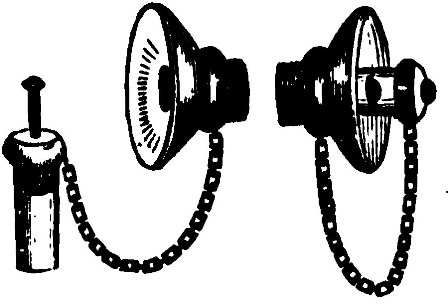
Whishaw's Telekouphonon 1848
A
"speaking telegraph", using gutta-percha tubing to connect rooms in
public buildings,club houses, mansions, hotels, warehouses and offices,
and at the Electric Telegraph Company's Central Station in London.
Speaking tubes had previously been made of inflexible tinplate conduit.
Shown
are whistle-mouthpieces of 1854 made from ivory, metal, glass or wood
to attach to the gutta percha tube; the removable whistle has an
Indicator which pops out when the whistle is sounded where several were
in use together.
78
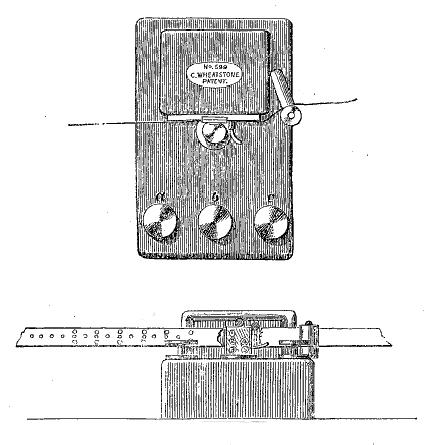
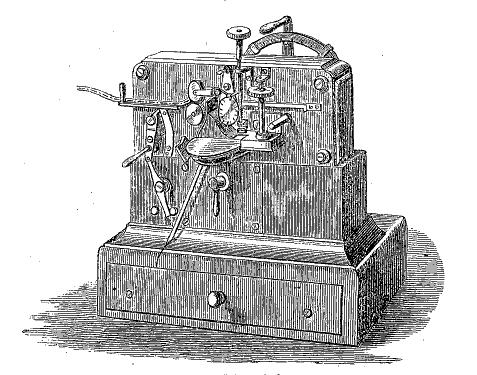
Wheatstone's Automatic Telegraph 1858
The Key-Punch and The Receiver
It sent and received three "characters", dot, dash and space, the key
punched
holes representing each character on a paper tape. Several key punches
were used to supply a single clockwork-driven high-speed transmitter
with tapes. The transmitter worked in synchronicity with a
distant clock-work driven receiver which printed dots and
dashes in ink on a paper tape. It was used by the Electric &
International Telegraph Company from 1867 on its long lines in Britain
and by the Great Northern Telegraph Company of Copenhagen from 1869 on
its underwater cables and its long lines in Russia.
79
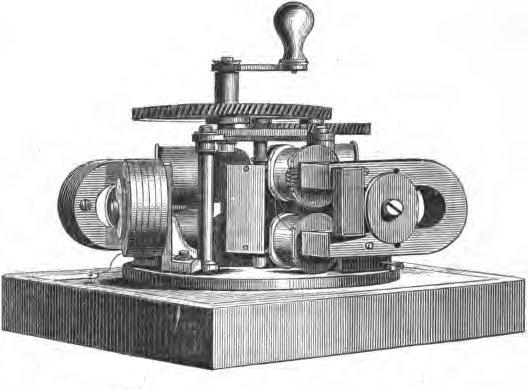
Wheatstone's Magnetic Exploder 1863
The first electric blasting machine, shown removed from its wooden casing.
Used
in colonial mining and by the British Army from 1861, and by
the Confederate States to detonate submarine charges or torpedoes in
1864, through a gutta-percha insulated copper wire.
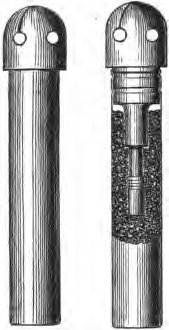
Abel's Magnet Fuze 1863
This
was the detonator used with the Magnetic Exploder, inserted in charges
of black powder or the much more powerful new explosive, gun cotton. It
has a box-wood head with a long copper primer filled with
phosphide of copper and a tubular case of black powder.
80
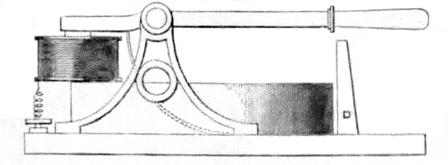

Wheatstone's Magnet & Bell 1840
Pressing
the lever down against the spring lifts the coil of wire away from a
permanent magnet to generate a pulse of electricity. It was used to
signal slow beats on a distant bell on railways and in mines for many
years. By 1848 it was known as the Thunder Pump from its lever action and as the bell was exceptionally loud.
81
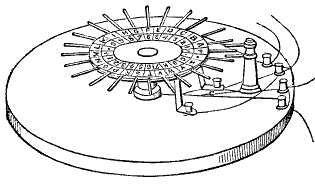
Wheatstone's Galvanic Dial Telegraph 1840
The
original battery-worked capstan sender that made and broke the circuit
to send pulses to a clockwork escapement moving a dial round
one character at a time.
82
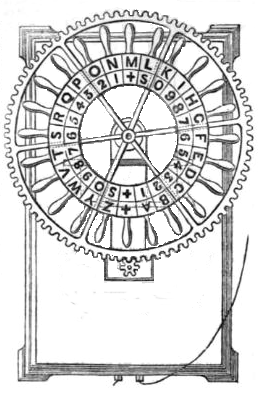
Wheatstone's Electro-Magnetic Telegraph 1843
The Dial Sender viewed from above, used on the Great Western Railway in 1843
and
experimentally on the London to Southampton circuit. Turning the wheel
transmitted a series of magneto-electrical pulses. No batteries needed.
83

Wheatstone's Electro-Magnetic Telegraph 1843
The first Dial Receiver
The
letters and numbers are visible through the small circular window. The
dial rotated through pulses of galvanic or magneto-generated
electricity. It had an interior bell alarm.
84
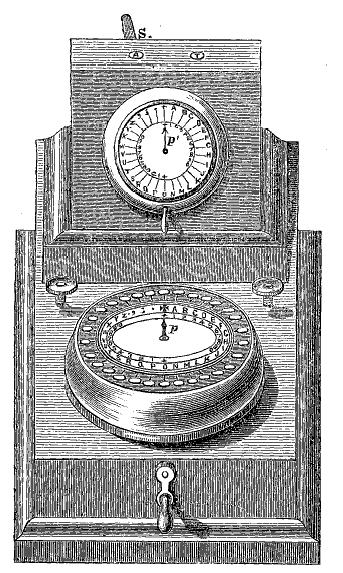
Wheatstone's Universal Telegraph 1858
Used
by the Universal Private Telegraph Company from 1860; indicating the
alphabet on its dials by turning the handle to generate
magneto-electricity it did not need batteries. The sender stopped the
needle by pressing one of the small button keys on the lower dial. The
lever on the top switched between A - alarm and T - telegraph.
(Every home should have had one)
85

Wheatstone's Universal Type Printer 1863
The
first desk-top printer, used with the communicator dial on the private
wires of the Universal Private Telegraph Company. With a clockwork
mechanism, it originally "printed" roman type without ink on
recyclable metallic tape.
86

Wheatstone's Magnetic Clock 1840
One of six "slave" clocks registering hours, minutes and seconds,
connected electrically to one master movement, at King's College,
London, in 1840
The Magnetic Clocks were made by E J Dent, the famous clockmaker, of 82 Strand, London
A Christies Photograph
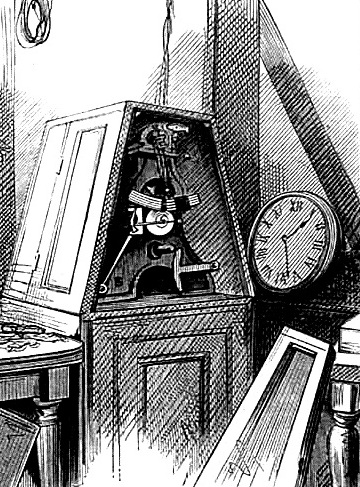
Wheatstone's Magnetic Clock 1870
First announced in 1840 but only put into production in 1870
Shown is the master instrument at the Central Telegraph Station, London.
Many subsidiary or slave dials were connected about the building
A magnificent collection of photographs of preserved telegraphic instruments can be found at
Fons Vanden Berghen's Museum Website
Telegraph, from the Greek “tele”, distant, and “graphos”, writing